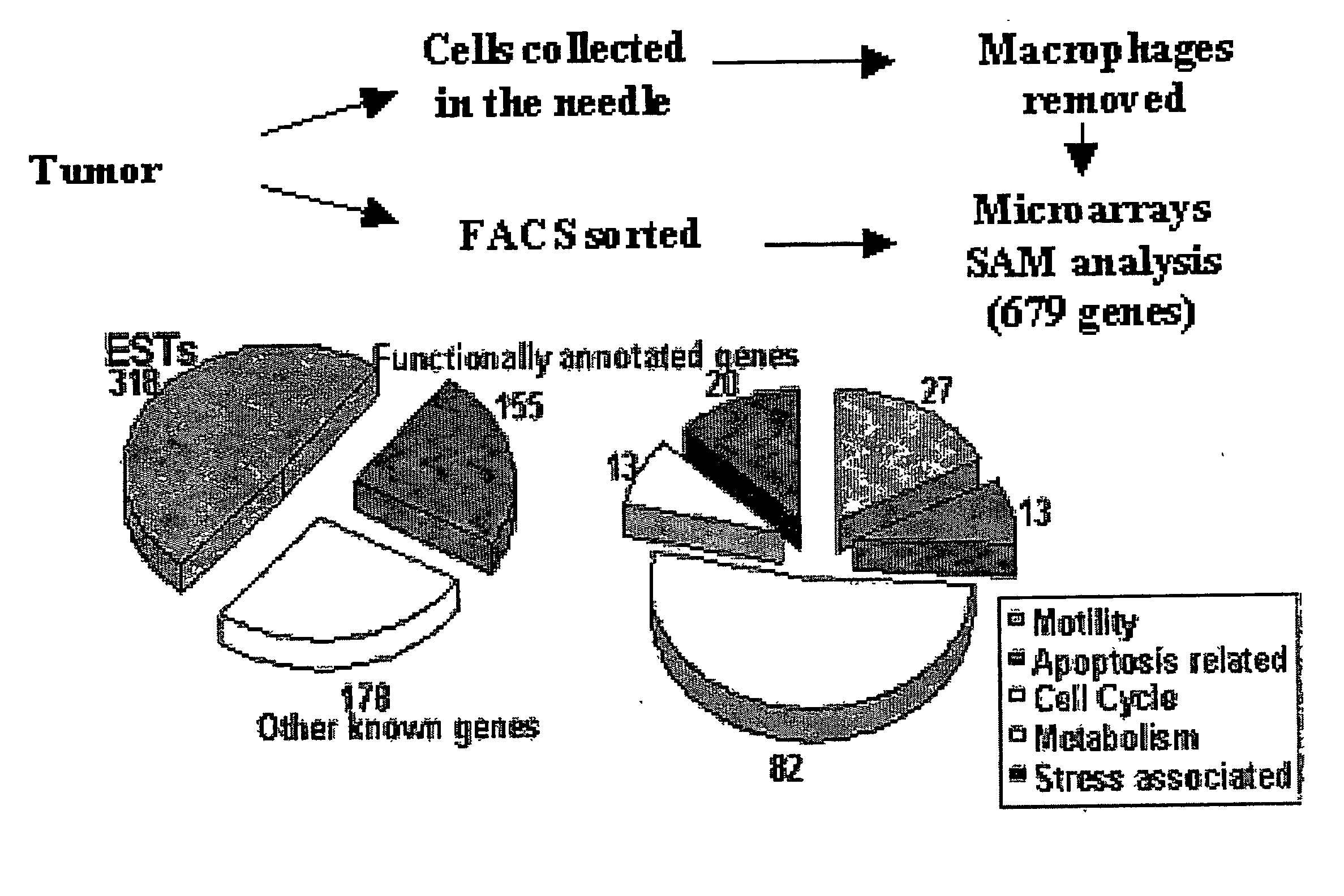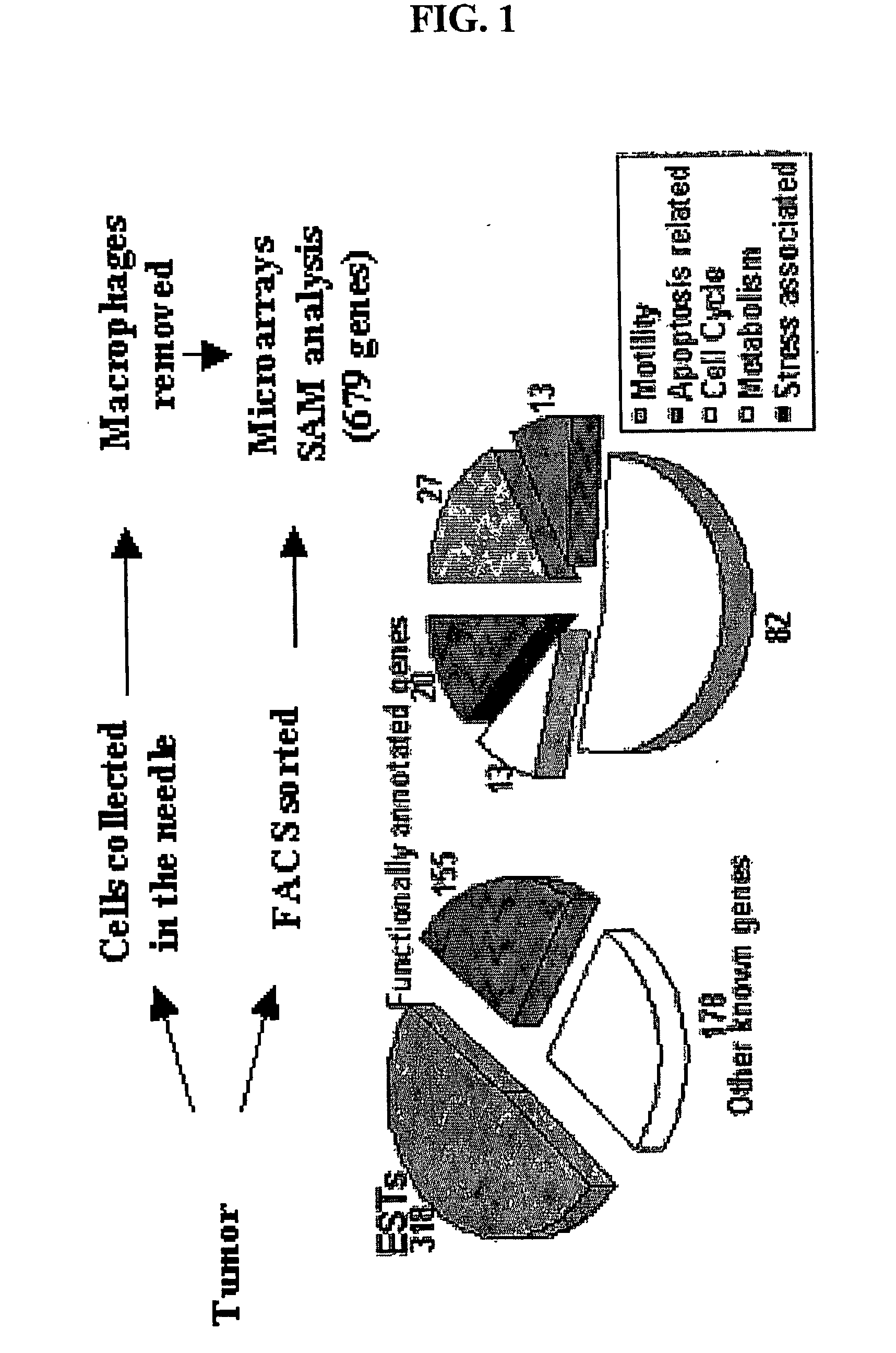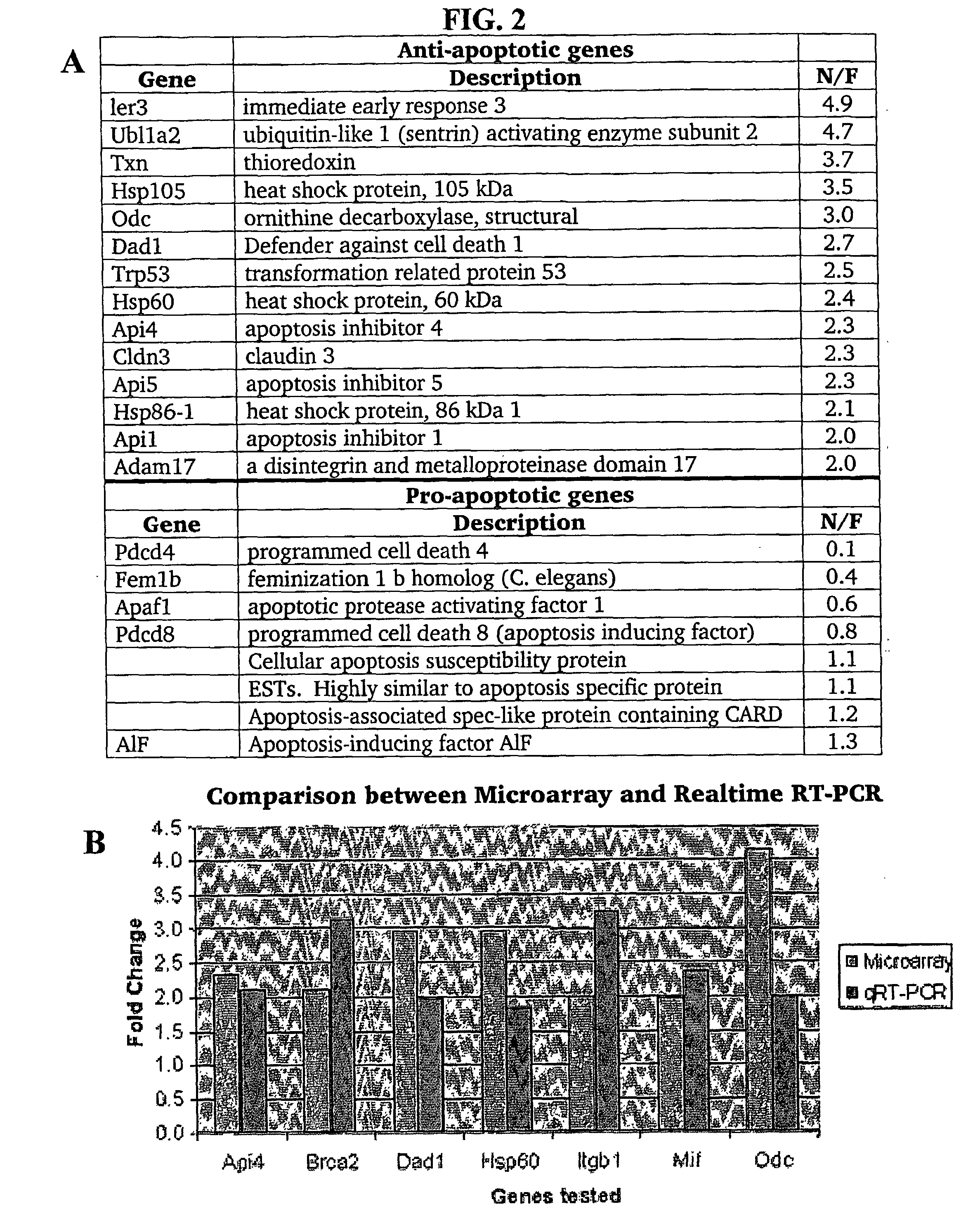Isolation, Gene Expression, and Chemotherapeutic Resistance of Motile Cancer Cells
- Summary
- Abstract
- Description
- Claims
- Application Information
AI Technical Summary
Benefits of technology
Problems solved by technology
Method used
Image
Examples
example 1
Breast Cancer Cells Isolated by Chemotaxis from Primary Tumors Show Increased Survival and Resistance to Chemotherapy
Example Summary
[0131]A novel observation resulting from intravital imaging of these tumors is the dramatic fragmentation of carcinoma cells when in contact with blood vessels in non-metastatic tumors (Wyckoff et al., 2000a) compared with the ability of carcinoma cells in metastatic tumors to enter blood vessels as intact whole cells. This suggests a survival advantage for metastatic cells during migration and intravasation.
[0132]In the current study we have collected a migratory population of carcinoma cells by chemotaxis to EGF containing microneedles held in the primary tumor. The collected cells were subjected to microarray analysis for differential gene expression. The results show that anti-apoptotic genes are up regulated and pro-apoptotic genes are down regulated coordinately in the migratory subpopulation. Induction of apoptosis by doxorubicin, cisplatin and e...
example 2
Identification and Testing of a Gene Expression Signature of Invasive Carcinoma Cells Within Primary Mammary Tumors
example summary
[0152]We combined chemotaxis-based cell collection and cDNA microarray technology to identify the gene expression profile of invasive carcinoma cells from primary mammary tumors in experimental animals. Expression of genes involved in cell division and survival, metabolism, signal transduction at the membrane, and cell motility were most dramatically increased in invasive cells, indicating a population that is not dividing but intensely metabolically active and motile. In particular, the genes coding for the minimum motility machine that regulates β-actin polymerization, and therefore the motility of carcinoma cells, were dramatically up regulated, while ZBP-1, which regulates the localization of β-actin, was downregulated. This pattern of expression suggested ZBP-1 is a suppressor of invasion. Overexpression of ZBP-1 suppressed chemotaxis and invasion in primary tumors and inhibited metastasis from tumors generated using intensely metastatic cell lines. We identified genes importan...
PUM
| Property | Measurement | Unit |
|---|---|---|
| Temperature | aaaaa | aaaaa |
| Volume | aaaaa | aaaaa |
| Volume | aaaaa | aaaaa |
Abstract
Description
Claims
Application Information
 Login to View More
Login to View More - R&D
- Intellectual Property
- Life Sciences
- Materials
- Tech Scout
- Unparalleled Data Quality
- Higher Quality Content
- 60% Fewer Hallucinations
Browse by: Latest US Patents, China's latest patents, Technical Efficacy Thesaurus, Application Domain, Technology Topic, Popular Technical Reports.
© 2025 PatSnap. All rights reserved.Legal|Privacy policy|Modern Slavery Act Transparency Statement|Sitemap|About US| Contact US: help@patsnap.com



